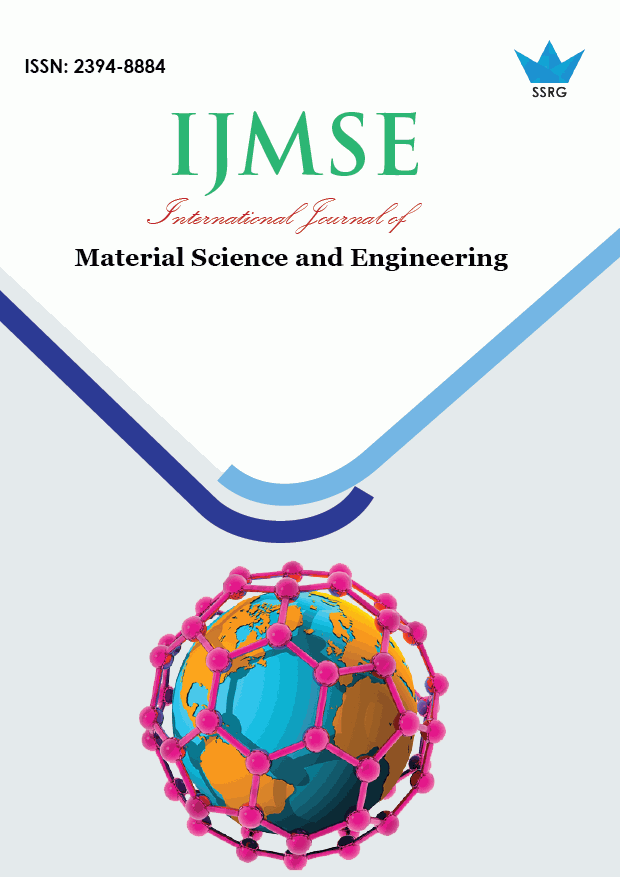Stochastic Model for Comfort in Dwellings: General Model

| International Journal of Material Science and Engineering |
| © 2023 by SSRG - IJMSE Journal |
| Volume 9 Issue 3 |
| Year of Publication : 2023 |
| Authors : Kenya Suárez-Domínguez, Lisbeth A. Brandt-Garcia, Elena F. Izquierdo Kulich, Yoana Perez-Badell, Rocio R. Gallegos-Villela |
How to Cite?
Kenya Suárez-Domínguez, Lisbeth A. Brandt-Garcia, Elena F. Izquierdo Kulich, Yoana Perez-Badell, Rocio R. Gallegos-Villela, "Stochastic Model for Comfort in Dwellings: General Model," SSRG International Journal of Material Science and Engineering, vol. 9, no. 3, pp. 26-33, 2023. Crossref, https://doi.org/10.14445/23948884/IJMSE-V9I3P103
Abstract:
From an architectural perspective, comfort is essential for well-being, encompassing sensory and emotional aspects. In this context, it focuses on thermal comfort, the feeling of well-being related to the home’s internal temperature. Comfort is related to the ability of the home to dampen external fluctuations and keep the interior temperature close to comfort. The present work seeks to develop a stochastic model that describes the behavior of the internal temperature of a house, considering the variability of the exterior temperature. A deterministic model for temperature in the wall and room is proposed. Stochastic variability is then introduced into the outside temperature. The Ito-Stratonovich formalism is used to obtain a stochastic model based on differential equations for heat transfer by conduction in the wall and by convection in the room. A system of stochastic differential equations is obtained that describes the deterministic behaviour of temperature in the house. Variability in outdoor temperature is introduced as a stochastic variable, developing a stochastic differential equation that describes the probability of temperature in the wall. Comfort indices calculated for different construction materials are presented. The stochastic behavior of ambient temperature and housing temperature is simulated for various materials. The results are discussed in terms of the ability of materials to dampen fluctuations. The results indicate that the ability to dampen fluctuations depends on the material selected. The importance of considering thermal and structural properties when choosing materials to ensure thermal comfort and safety is highlighted.
Keywords:
House comfort, Heat stochastic model, Thermal in construction materials.
References:
[1] V. Grandson, R. Cubillos, and R. Barrios, "Resilient Design Aspects Applied to the Envelope that Determine Thermal Comfort in Social Housing," Construction Engineering Magazine, vol. 36, no. 2, pp. 197-209, 2021.
[CrossRef] [Google Scholar] [Publisher Link]
[2] Seyed Morteza Hosseini et al., "A Morphological Approach for Kinetic Façade Design Process to Improve Visual and Thermal Comfort," Building and Environment, vol. 153, pp. 186-204, 2019.
[CrossRef] [Google Scholar] [Publisher Link]
[3] Lasse Rohde et al., "Framing Holistic Indoor Environment: Definitions of Comfort, Health and Well-Being," Indoor and Built Environment, vol. 29, no. 8, pp.1118-1136, 2020.
[CrossRef] [Google Scholar] [Publisher Link]
[4] Camila Salazar-Fernández et al., "The Perceived Impact of COVID-19 on Comfort Food Consumption Over Time: The Mediational Role of Emotional Distress," Nutrients, vol. 13, no. 6, pp. 1-12, 2021.
[CrossRef] [Google Scholar] [Publisher Link]
[5] Qiantao Zhao, Zhiwei Lian, and Dayi Lai, "Thermal Comfort Models and their Developments: A Review," Energy and Built Environment, vol. 2, no. 1, pp.21-33, 2021.
[CrossRef] [Google Scholar] [Publisher Link]
[6] Kudabayev Ruslan et al., "Modeling the Thermal Regime of a Room in a Building with a Thermal Energy Storage Envelope," Mathematical Modelling of Engineering Problems, vol. 9, no. 2, 2022.
[7] Robert Byron Bird, Edwin Niblock Lightfoot, and Warren E. Stewart, Transport Phenomena, Wiley, pp. 1-780, 1960.
[Google Scholar] [Publisher Link]
[8] Crispin W. Gardiner, Handbook of Stochastic Methods for Physics, Chemistry, and the Natural Sciences, Springer-Verlag, pp. 1-442, 1983.
[Google Scholar] [Publisher Link]
[9] N.G. Van Kampen, Stochastic Processes in Physics and Chemistry, Elsevier Science, pp. 1-480, 1992.
[Google Scholar] [Publisher Link]
[10] Jack Philip Holman, Heat Transfer, McGraw-Hill, pp. 1-696, 1997.
[Google Scholar] [Publisher Link]
[11] Jeffrey D. Camm, and James R. Evans, Management Science: Modelling, Analysis and Interpretation, South-Western College Publishing, pp. 1-865, 1996.
[Google Scholar] [Publisher Link]
[12] Wayne L. Winston, S. Christian Albright, and Mark Nathan Broadie, Practical Management Science: Spreadsheet Modeling and Applications, Duxbury Press, pp. 1-796, 1997.
[Google Scholar] [Publisher Link]
[13] G. N. Uzakov et al., "Mathematical Modeling of the Combined Heat Supply System of a Solar House," Energy. News of Higher Educational Institutions and Energy Associations of the CIS, vol. 65, no. 5, pp. 412-421, 2022.
[CrossRef] [Google Scholar] [Publisher Link]
[14] C. Suresh, Tapano Kumar Hotta, and Sandip K. Saha, "Phase Change Material Incorporation Techniques in Building Envelopes for Enhancing the Building Thermal Comfort-A Review," Energy and Buildings, vol. 268, 2022.
[CrossRef] [Google Scholar] [Publisher Link]

 10.14445/23948884/IJMSE-V9I3P103
10.14445/23948884/IJMSE-V9I3P103